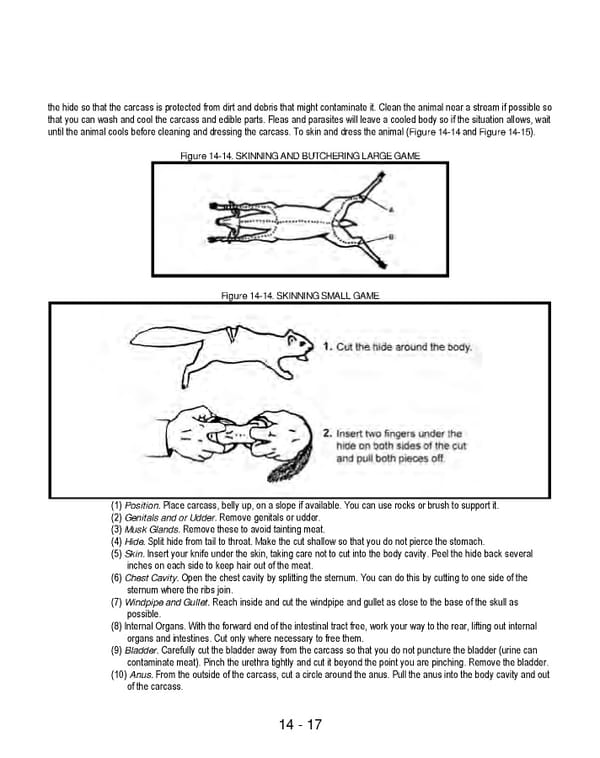14 - 17 the hide so that the carcass is protected from dirt and debris that might contaminate it. Clean the animal near a stream if possible so that you can wash and cool the carcass and edible parts. Fleas and parasites will leave a cooled body so if the situation allows, wait until the animal cools before cleaning and dressing the carcass. To skin and dress the animal (Figure 14-14 and Figure 14-15). Figure 14-14. SKINNING AND BUTCHERING LARGE GAME Figure 14-14. SKINNING SMALL GAME (1) Position. Place carcass, belly up, on a slope if available. You can use rocks or brush to support it. (2) Genitals and or Udder. Remove genitals or udder. (3) Musk Glands. Remove these to avoid tainting meat. (4) Hide. Split hide from tail to throat. Make the cut shallow so that you do not pierce the stomach. (5) Skin. Insert your knife under the skin, taking care not to cut into the body cavity. Peel the hide back several inches on each side to keep hair out of the meat. (6) Chest Cavity. Open the chest cavity by splitting the sternum. You can do this by cutting to one side of the sternum where the ribs join. (7) Windpipe and Gullet. Reach inside and cut the windpipe and gullet as close to the base of the skull as possible. (8) Internal Organs. With the forward end of the intestinal tract free, work your way to the rear, lifting out internal organs and intestines. Cut only where necessary to free them. (9) Bladder. Carefully cut the bladder away from the carcass so that you do not puncture the bladder (urine can contaminate meat). Pinch the urethra tightly and cut it beyond the point you are pinching. Remove the bladder. (10) Anus. From the outside of the carcass, cut a circle around the anus. Pull the anus into the body cavity and out of the carcass.
 Ranger Handbook Page 264 Page 266
Ranger Handbook Page 264 Page 266